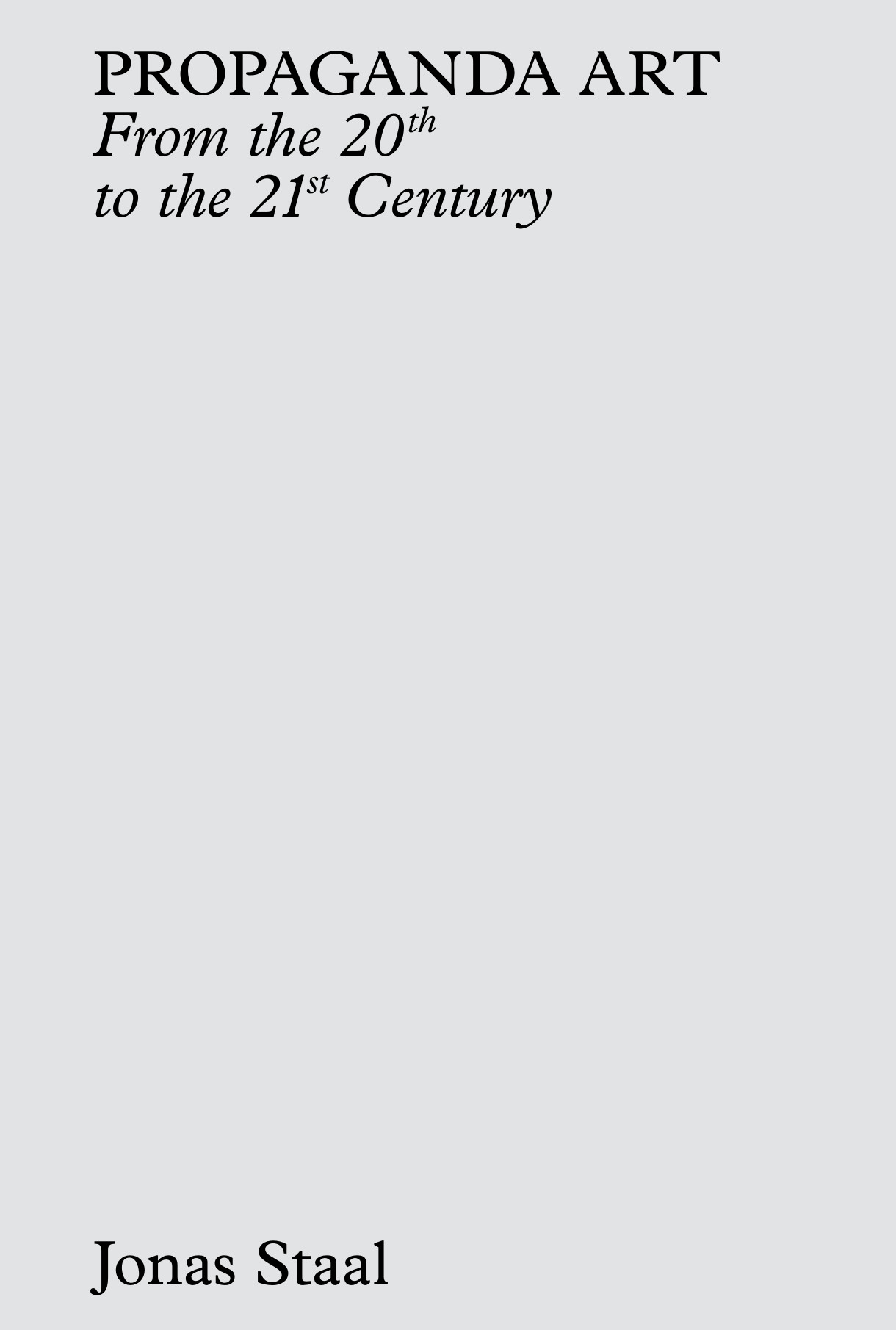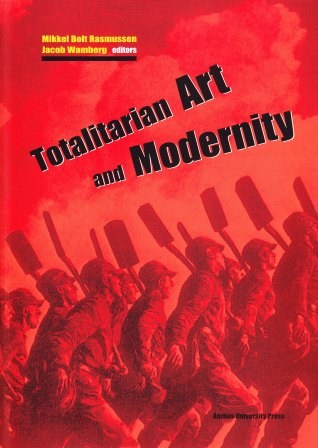Jonas Staal: Propaganda Art in the 21st Century (2019)
Filed under book | Tags: · art history, artistic research, avant-garde, democracy, modernism, performance, politics, power, propaganda, totalitarianism, war on terror

“Propaganda art—whether a depiction of joyous workers in the style of socialist realism or a film directed by Steve Bannon—delivers a message. But, as Jonas Staal argues, propaganda does not merely make a political point; it aims to construct reality itself. Political regimes have shaped our world according to their interests and ideology; today, popular mass movements push back by constructing other worlds with their own propagandas.
Staal shows that propaganda is not a relic of a totalitarian past but occurs today even in liberal democracies. He considers different historical forms of propaganda art, from avant-garde to totalitarian and modernist, and he investigates the us versus them dichotomy promoted in War on Terror propaganda art—describing, among other things, a fictional scenario from the Department of Homeland Security, acted out in real time, and military training via videogame. He discusses artistic and cultural productions developed by such popular mass movements of the twenty-first century as the Occupy, activism by and in support of undocumented migrants and refugees, and struggles for liberation in such countries as Mali and Syria.
Staal proposes a new model of emancipatory propaganda art—one that acknowledges the relation between art and power and takes both an aesthetic and a political position in the practice of world-making.”
Publisher MIT Press, September 2019
ISBN 9780262042802, 0262042800
230 pages
Interview with author: Pierre d’Alancaisez (New Books Network, 2021, podcast).
Reviews: Christoph Chwatal (Third Text, 2020), Hailey Maxwell (The Drouth, 2020), Joerg Bader (Critique d’art, 2019, FR).
PDF, PDF (12 MB, updated on 2024-4-23)
Comment (0)Jonas Staal: Propaganda Art from the 20th to the 21st Century (2018)
Filed under book, thesis | Tags: · art history, artistic research, avant-garde, democracy, modernism, performance, politics, power, propaganda, totalitarianism, war on terror

“This study by artist Jonas Staal explores the development of propaganda art from the 20th to the 21st century. Staal defines propaganda as the performance of power by means of the equation propaganda = power + performance. Through his work as a propaganda researcher and practice as a propaganda artist, he argues that different structures of power generate different forms of propaganda and therefore different forms of propaganda art. Whereas in the context of the 20th century Staal discusses the differences between avant-garde, totalitarian, and modernist propaganda art, in the 21st century he proposes the categories of War on Terror Propaganda Art, Popular Propaganda Art, and Stateless Propaganda Art. By means of concrete examples of artists and artworks within each of these categories, he attempts to show how the performance of power in the 21st century translates into different visual forms, and how they shape and direct our reality. Staal’s study shows that power and art exist in continuous interaction. Propaganda and propaganda art are not terms that only refer to the past, but concepts and practices through which we can understand the construction of reality in the present.”
PhD Dissertation, Faculty of Humanities, University of Leiden
Open access
425 pages
PDF, PDF (2 MB)
Video (12 min)
Mikkel Bolt Rasmussen, Jacob Wamberg (eds.): Totalitarian Art and Modernity (2010)
Filed under book | Tags: · art history, avant-garde, capitalism, communism, democracy, fascism, labour, modernism, modernity, monument, mythology, nazism, politics, revolution, socialism, socialist realism, soviet union, technology, totalitarianism, war

“In spite of the steadily expanding concept of art in the Western world, art made in twentieth-century totalitarian regimes – notably Nazi Germany, fascist Italy and the communist East Bloc countries – is still to a surprising degree excluded from mainstream art history and the exhibits of art museums. In contrast to earlier art made to promote princely or ecclesiastical power, this kind of visual culture seems to somehow not fulfill the category of ‘true’ art, instead being marginalised as propaganda for politically suspect regimes.
Totalitarian Art and Modernity wants to modify this displacement, comparing totalitarian art with modernist and avant-garde movements; confronting their cultural and political embeddings; and writing forth their common generalogies. Its eleven articles include topics as varied as: the concept of totalitarianism and totalitarian art, totalitarian exhibitions, monuments and architecture, forerunners of totalitarian art in romanticism and heroic realism, and diverse receptions of totalitarian art in democratic cultures.”
With contributions by Mikkel Bolt, Sandra Esslinger, Jørn Guldberg, Paul Jaskot, Jacob Wamberg, Christina Kiaer, Anders V. Munch, Kristine Nielsen, Olaf Peters, K. Andrea Rusnock, and Marla Stone.
Publisher Aarhus University Press, Århus, 2010
Acta Jutlandica series, 9
ISBN 8779345603, 9788779345607
359 pages
via Mikkel Bolt
PDF (10 MB)
Comment (0)
